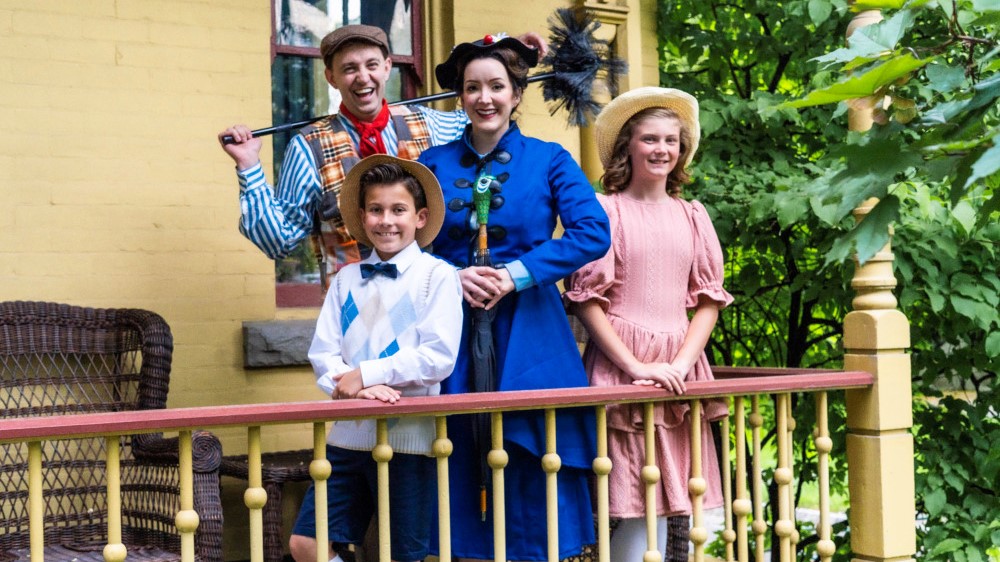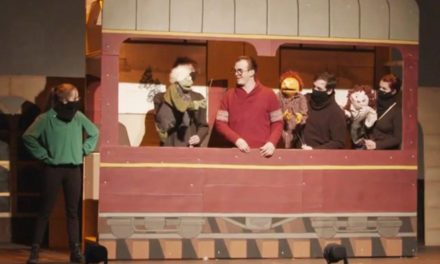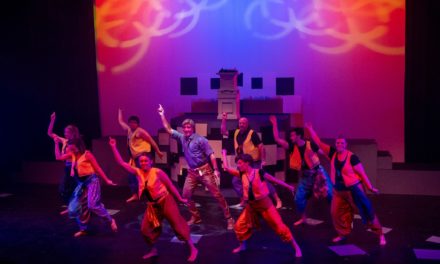OREM — The SCERA’s current production of Mary Poppins is the type of show that the company is known for: a joyous, family-friendly musical that showcases local talent. But it is still an ambitious choice for them to mount because Mary Poppins is also a technically challenging show, and that made me leery of attending. But my worries were unfounded, and the SCERA’s Mary Poppins can join the ranks of the company’s successes.
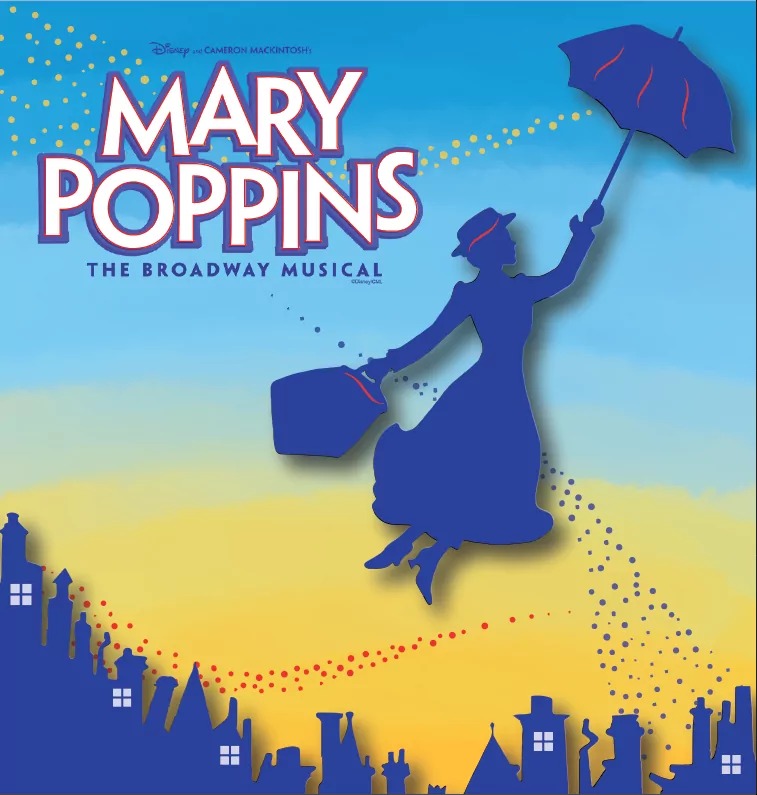
Show closes June 24, 2023.
Julian Fellowes‘s script for the stage version of Mary Poppins follows the general outline of the film and includes all the beloved songs written by Richard M. Sherman and Robert B. Sherman. It also has additional songs and lyrics by George Stiles and Anthony Drewe that are in keeping with the general character of the Sherman brothers’ beloved score, though none of the new songs overshadow the originals. The new plot points and other changes make the stage show a separate work of art that is worth seeing, even for those who are well acquainted with the story. This is not your parents’ Mary Poppins.
One perennial challenge for shows in the SCERA Shell outdoor amphitheater is how big the space is. The stage is at least 80 feet wide, and the amphitheater seats 3,500 at capacity. For the first half of Mary Poppins, most of the actors gave performances that would work in the SCERA’s 450-seat indoor theater, but which felt subdued and unenergetic in the Shell. The most notable exceptions were Shelly Sackett as Mrs. Brill and Will Pritchard as Robertson Ay. Their two characters are the Banks family’s servants, and their performances were so enthusiastic that they did not feel diminished on the massive stage. Seeing what was possible, I wish director Kelsey Mariner Thompson had pulled more energy from her cast.
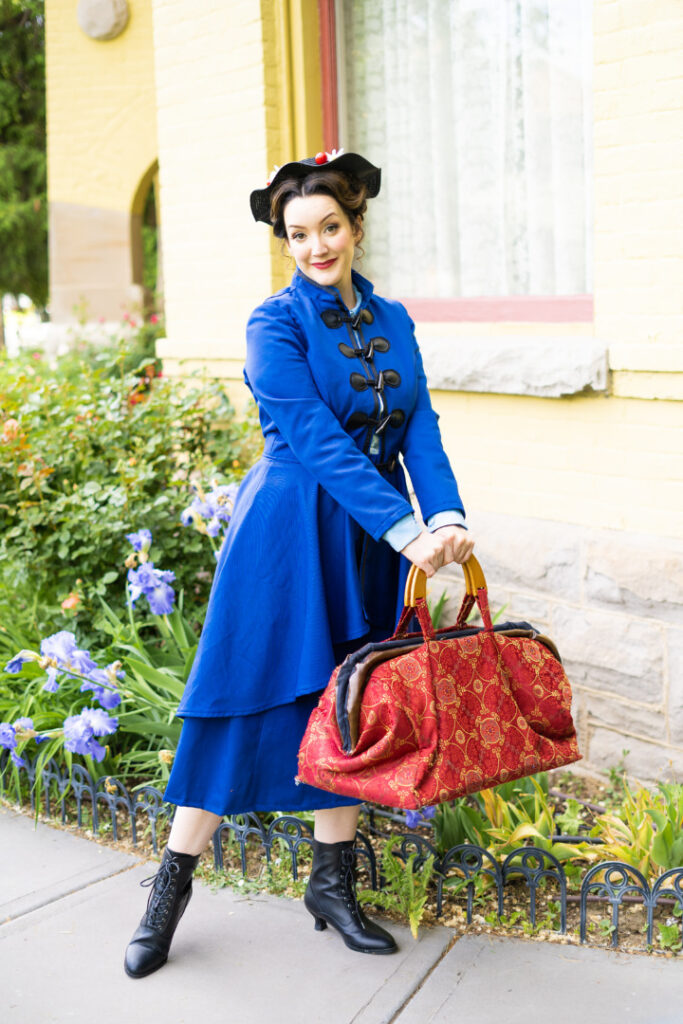
Amber Lee Roberts as Mary Poppins. Photo by Rachael Gibson.
Thankfully, the cast raised the energy and emotion of their performances in the second act. It helps that the script gives the characters bigger events to face, which serves as a foundation for actors to have reactions. For example, George Banks (played by Garrett Smit) spends most of the first act being aloof from his family, while in the second act he has a big scene in the bank where he proclaims he has “rediscovered the human race” and an emotional makeup scene with his wife, Winifred (played by Kelsea Kocherhans Smellie). The ensemble seemed to dance more energetically in the second act, especially in “Step In Time,” and their singing was louder and more passionate in “Let’s Go Fly a Kite” than at any point in the first act.
Thompson did create many moments that brought a smile to my face. The chimney sweeps invading the Banks home during “Down the Chimney” was a zany mini-farce, and the play’s opening scene effectively established the mood of the show. Thompson thoughtfully stages songs like “A Man Has Dreams” and “Feed the Birds,” and her leadership was an important factor in getting this difficult play on its feet.
Choreographer Rebecca Boberg‘s most impressive work was the tap dancing for “Step In Time” and the frantic movements of “Supercalif…” These were both crowd-pleasing songs and the highlights of the evening. However, other songs had simpler choreography, and even then the cast sometimes had trouble executing the steps well (such as in “Jolly Holiday”).
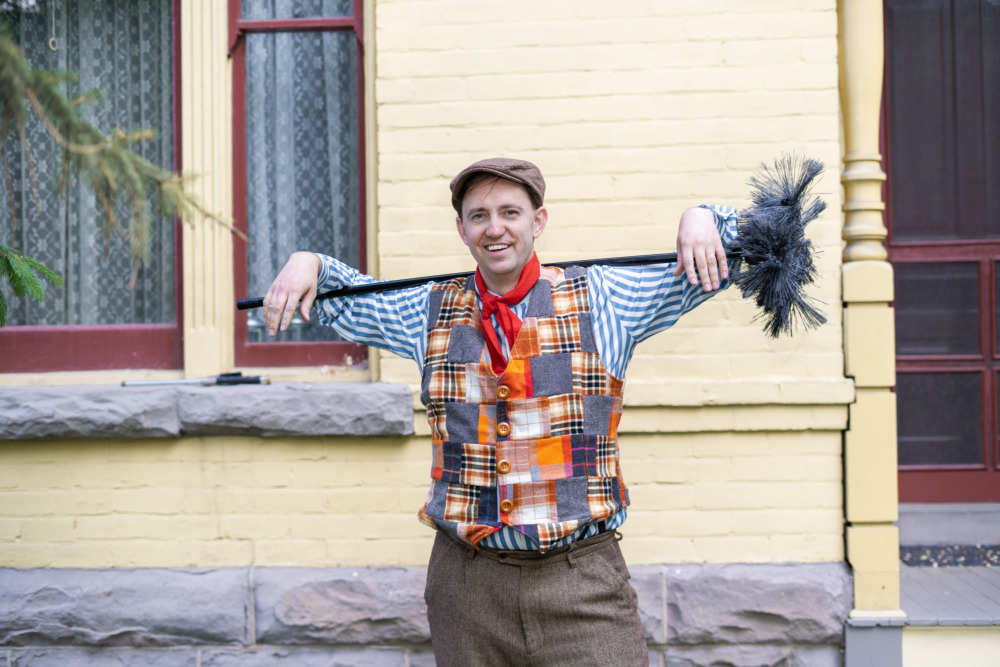
Scott Sackett as Bert. Photo by Rachael Gibson.
Amber Lee Roberts has the daunting task of playing the iconic title role. Roberts has a lovely lilt to her voice, which was most apparent in “A Spoonful of Sugar.” She makes Mary Poppins the ideally prim and proper British nanny, and “Practically Perfect” is sung in a matter-of-fact way that keeps Mary from appearing haughty. I also appreciated the emotional depth Roberts brought to “Feed the Birds” in her singing.
As Bert, Scott Sackett has a nonchalant casualness about him, making Bert an effective observer who comments on the action. Sackett is adept at leading the dancing during “Supercalif…” and “Step in Time,” and he was equally comfortable in tap and traditional musical theatre styles. Importantly, Bert and Mary seemed like old friends. Both characters are outsiders, and Sackett and Roberts understood that each character needs the other so that they have someone to open up to.
Scenic designer Tina Fontana is the production’s hero. The action of Mary Poppins occurs in many locations, and Fontana was able to create every setting, despite the limited wing space at the SCERA Shell amphitheater. The Banks family home was an impressive two-story house that exuded middle-class respectability, with a fresh coat of paint and blooming rosebushes. The set opened up to reveal an interior parlor and staircase that allowed the scenes in the home to take place on about a third of the stage. Other sets — representing the Banks children’s nursery, the rooftops of London, the park, the kitchen, fantasy settings, and more — were satisfying and pleasing to look at.
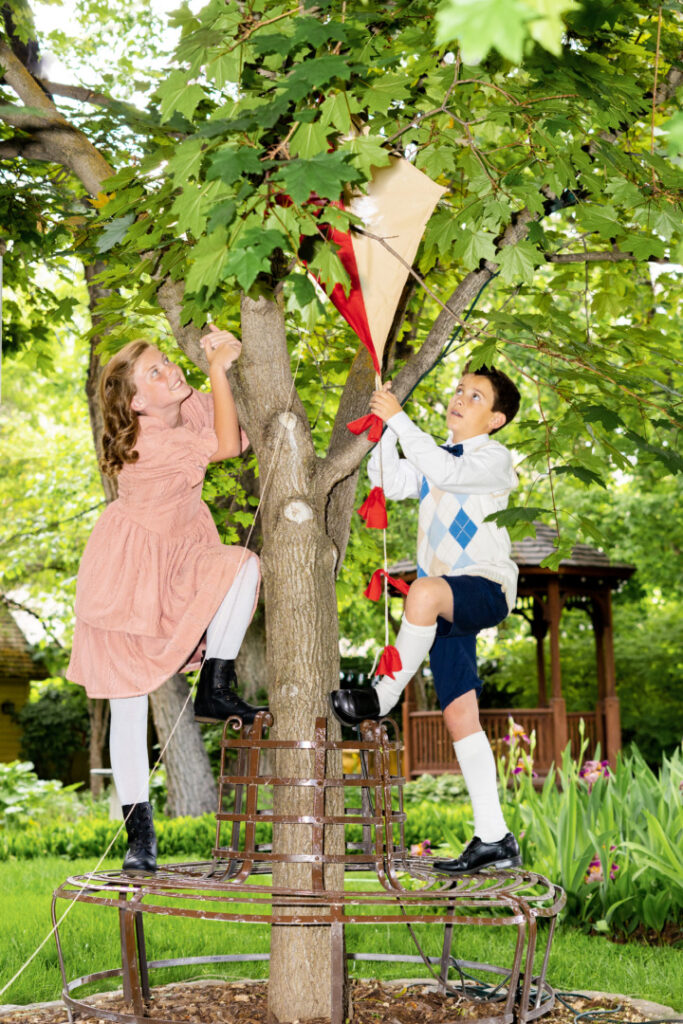
Left to right: Sumer Olenik as Jane Banks and Hunter Jones as Michael Banks. Photo by Rachael Gibson.
There were other production team members who made admirable contributions to Mary Poppins. Dialect coach Christie Gardiner helped this cast create impeccable British accents that were the best I have ever heard in a non-professional play. Kelsey Seaver likely designed over 150 costumes for the play, ranging from subdued black suits for the bank employees to the bright, ebullient costumes for the fantasy sequences. “Jolly Holiday” featured pastels and patterns, while the costumes for “Supercalif…” were bright mismatched solid colors decorated with letters. It was nice that both sets of costumes were fantastical and yet completely different. I did notice, though, that the costumes for the bank customers and the chairman were modern suits and not Edwardian period clothing.
Getting any musical on stage is an accomplishment. But when a show requires flying actors, a dialect coach, dozens of costumes, several sets, and multiple dance styles, then getting that musical on stage is a miracle. SCERA has a nice production of Mary Poppins that is full of heart and sweetness, and I recommend this show for anyone looking for a nice family outing.

This review was supported by a generous grant from the Orem CARE program.

